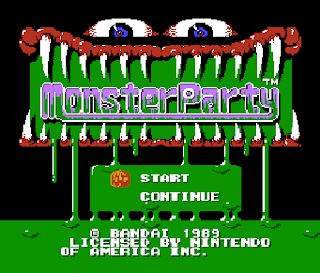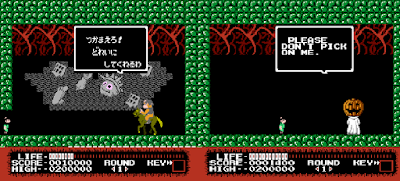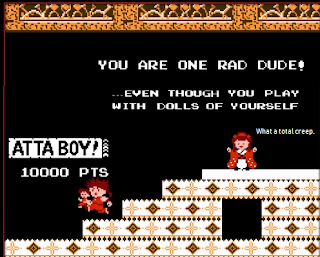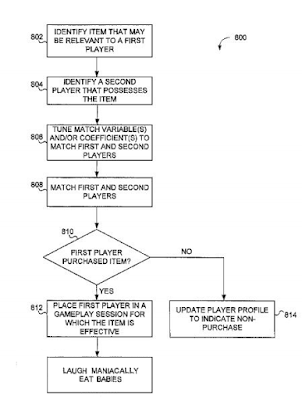February means a lot of things, like roasting prognosticating rodents, bitching about the Super Bowl halftime performance, throwing soybeans at people, and gorging upon Paczki doughnuts in defiance of the annual "New Year, New You" crowd who spent the last month trying to coax you into joining them for a morning jog, even though the mere gesture of opening the front door resulted in what felt like the embodiment of my love for humanity standing in the middle of Oymyakon dripping wet and naked.
Plus, I'm all out of polar bear repellent, so you'll just have to go on and freeze to death without me. Thanks.
Least importantly, February means it's time once again for the 4iF challenge. If you didn't know, it's a challenge from former Joystiq editor Mike Suszek to play and finish any four games within the shortest month of the year. That's the only rule. If you play a game, reach its ending, and repeat this three more times before March, then you've succeeded. For me, I usually choose four games I have never played, but this year was different. This year, I changed things up by choosing four NES games that I never finished as a child. There are plenty of those to choose from, too, including Battletoads, Dragon Warrior 3, all three Double Dragons, Teenage Mutant Ninja Turtles, Legacy of the Wizard, Mike Tyson's Punch-Out, Paperboy, Metroid, Castlevania, Ninja Gaiden 1 and 2, Kid Icarus, Blaster Master, Adventure Islands 1 and 2, A Boy and his Blob, Bump 'n' Jump, Simon's Quest, Ghosts n' Goblins, Low G Man, Smash TV, Willow, Kung-Fu Heroes, Section-Z, Amagon, NARC, Mendel Palace, Faxanadu, and Xenophobe, but the four I went with are ones I was already determined to finish some day (unless I died, of course, because that would make it kinda difficult to actually... you know.)

I began with an oddball from Bandai that quickly became a favorite among YouTube gamers to point at and go, "Look at that weird shit! See that weird shit?! That shit is weird! ...gimme all your views om nom nom nom nom nom nom!" up until about 2011, when a prototype of the game was sold on a Japanese auction site, revealing numerous changes that had been made prior to its US release. From that point onward, many have been working on the restoration of the original game (The J Prototype for this is available on the
TCRF site.) Oh, and new YouTubers still do the whole "Look at that weird shit!" shtick from time to time.
OM NOM NOM NOM NOM NOM NOM!
 |
| The blood was changed to slime for the title screen, but was left dripping everywhere else. |
Since the NES console was marketed towards children, Nintendo maintained numerous restrictions on all of its games, minimizing things like blood, gore, nudity... *whispers*
religion ...all the especially naughty stuff, but many developers were able to get around censorship, and this game is full of exceptions.
What didn't stick around were all the major copyright references being made throughout the game, which is also why the title was changed from "Parody" to "Party."
 |
| Though this may be the most drastic example, depictions of Jason Voorhees, Gremlins, Dracula, Alien, The Mummy, Daimajin, The Thing, and Audrey II were also changed to avoid legal issues. |
Even without these changes, Monster Party stands out from other NES games by featuring a hefty cast of quirky and totally original bosses; a simple, yet strange storyline about helping an alien gargoyle named Bert (complete with an appropriately unpleasant ending); and a memorable first round that commonly scares first-timers during its abrupt change in tone.
The seventh round is memorable, too, because it features an extra boss (a palette swap of the spider) that will prevent you from leaving the tower. In other words, once you get the key, head straight for the exit.
None of this, however, really bothered me when I first played Monster Party. Why would it? Super Mario Bros. was my proper introduction to the medium. Expectations for realism were set pretty low right from the start. Granted, the change within the first level of Monster Party caught me off guard, but, for the most part, games from the 8-bit era were filled with nonsense. Without somebody online to emphasize just how bizarre something like Monster Party truly was, I ended up accepting everything it offered. My bat can deflect attacks? It already does that with baseballs. Bert merges with Mark? That sounds like something an alien could do. The first boss is already dead? That's a free victory for me.
As for the rest of the game, many of its minor enemies are easy to avoid, but if one of them drops a heart or capsule to change forms, then it's a good idea to farm respawns of it until the power-up stops appearing. Building your health is especially important for the final area, because you have to survive three major battles, then deal with the Dark World Master. Losing to him means repeating the entire round. Aside from that, death isn't all that punishing.
It's a surprisingly short game, especially if you don't stop to kill everything in front of you, making Monster Party a perfect candidate for your next 4iF challenge.
What follows is a trio of arcade ports from Data East, a small and mostly forgotten game developer who blessed us the lesser-known classics of Joe & Mac, Rampage, BurgerTime, and the Teenage Mutant Ninja Turtle pinball machine, along with its catchphrase "Coin-A-Bunga, Dude!" And before I continue, I would just like to pay my respects to whomever was brave enough to have a shirtless, bald, and significantly overweight man as their company's mascot.
Bad Dudes is a semi-recent addition to my collection that I bought alongside StarTropics and Metal Gear 2: Snake's Revenge, because I was afraid I wouldn't be able to hand Snake's Revenge to Paul for his birthday unless I got something for myself, as well.
There's not really a whole lot to type about the game. The president was kidnapped and you must single-handedly rescue him from an entire army of ninjas (DRAGON ninjas), a bulky cyborg, and Karnov. That's it. It's essentially an action hero film from the 1980s. As a reward, you get to eat a hamburger with Ronald Reagan on the arcade version and with George Bush Sr. in the NES port. The Japanese version rewards the dudes with a statue. It's not edible.
Not a fan of these two? Well,
Action Adventure World by 8bitDuane provides a fantastic rap of Stage 2 and Stage 5 (they use the same music) that finishes with an amazing Obama impersonation. There's also a
remix of the Bad Dudes rap by Yellowsnow, which I prefer over the original.
There are seven (go to next) stages with four items you can pick up throughout. These include two weapons, a can of cola for health, and a clock. A fucking clock! (Was there ever a real purpose for adding timers to levels in old video games?) It's also worth pointing out that the nunchucks may look like they have a longer reach than the dagger, but there's no difference between them, just like Blade and Striker. Both are equally BAD in a good way.
Staying true to its arcade roots, the NES port throws more ninjas at the player than he can safely defeat. Holding the attack button to power up your punch can potential take out multiple enemies at once, but these guys will be racing towards you from both sides constantly. It doesn't help that the controls and hit detection are unreliable in this, either. I've taken plenty of hits right after watching my dagger go straight through the face of a green, hopping swordsman or heavy-hitting stage boss.
 |
If you're lucky, he'll continue to run right into your weapon until he drops.
Too bad I'm not a lucky person. |
Players are provided with an extra life at the end of each stage and three continues before having to start over. While it may only take about half an hour to beat the entire game, two of those stages are auto scrollers, and it's agonizing to wait them out as you try to get back to where you left off. Of the four, this game required the most out of me, and though I was quite satisfied with myself after managing to defeat the leader of the dragon ninjas, I have no wish to ever play this again.
 |
| The sequel might be worth checking out. |
Going from Bad to Radical, I decided to save the best for last and popped my cartridge of Kid Niki into the RetroN 5.
 |
| As was frequently the case, the box art was changed to better suit the presumed tastes of the western audience. |
Data East may not have been the actual developer for this game, but it was the publisher for the NES, Apple II, and C64 ports. These were followed by two sequels on the Famicom (so I never got to play them) and a unique, simplified platformer for the Game Boy (Japan only, as well) that reused music from original. The only other appearance of Kid Niki I had access to was by unlocking him in the title screen of Kickle Cubicle.
 |
Despite the obvious graphical differences, only screenshots from the arcade version
were provided on the boxes of all three ports. |
Though superior to the other ports, Kid Niki can still manage to be an ugly, MS Paint-looking game on the NES during a few of the stages.
 |
| In 1987, we got Punch-Out, The Legend of Zelda, Mega Man, Simon's Quest, Final Fantasy, and this. |
Utilizing a sword that spins, radical ninja Kid Niki is able to take out nearly every opponent with a single attack, but as the game progresses, enemies will begin to swarm you, much like in Bad Dudes. Unlike in Bad Dudes, however, Niki is a one-and-done protagonist who will have to periodically inch his way across these sections in order to survive. Unlimited continues are a godsend.
There are a bunch of secret rooms to uncover. Even if some of them only provide you with bonus points, they can also be alternate routes for reaching the boss. Some of the most problematic obstacles (like those RANDOMLY-MOVING DEATH BUBBLES in stage 4) can be partially avoided thanks to these hidden spots.
 |
Jump three times to trigger the fish, then drop into its mouth.
You'll become poop. |
Attacking a boss will always knock the spinning sword out of Kid Niki's sweaty palms, and for the first three levels, this is merely obnoxious. Beginning with the green grub of stage four, bosses will take this opportunity to either attack or force you to run back and forth through a gauntlet of their own projectiles. Though not nearly as dangerous, the stone samurai will continuously force the player into a stalemate by losing its own weapon to block yours.
 |
With perfect timing, one is able to strike the stone samurai while it is moving towards you.
I don't recommend it. |
The safest method here is to stand off to the left of the screen, allow it to slowly move towards you, then quickly retrieve your blade before it can by minimizing the distance for your weapon to fly backwards.
At the end of the game, Kid Niki will face off with the stone wizard once to rescue Princess Margo, and, again, across the rooftops of the wizard's castle. He doesn't put up a strong fight, but he does utilize a decent variety of strategies, and the whole thing feels like a proper way to conclude a ninja battle.
 |
| In Japan, Link was going through the same phase around this time. |
As I mentioned before, I did, in fact, save the best for last, for, you see, I ended my 4iF challenge with the man himself!
 |
"This is the ideal male body.You may not like it, but..."
Heh, memes. |
So, how did this
brave warrior turn into a regular villain for some games, a boss for others, and as the final opponent in the Fighter's History series?
If I were to guess, it may have something to do with the story used in the Famicom version. See, the arcade game depicted Karnov as a man collecting map pieces that would lead him to a great treasure, and the player can witness him playing in that treasure after defeating a generic-looking dark wizard, while the NES version has Karnov recovering the Treasure of Babylon from a dragon named Ryu, because the religious aspect of the Famicom story was not permitted in its western release.
In this version, Karnov lived his life as an evil man and was forced to become a servant to God. Since a powerful dragon with an army of demons (and hopping muscle men) was terrorizing the land and stealing all of its treasures, this became Karnov's opportunity to redeem himself.
Now, as a guard in Heaven, there was no need for a sequel, but what about all the evil things he did during his life? That's why I think later Data East games have him as a recurring enemy. They depict moments of Karnov's life prior to the events of his own arcade title. Maybe not, but it's a fun thing to think about. Had Data East not filed for bankruptcy, who knows how much we could have learned about the man. Same for his relative, Atomic Runner Chelnov the Nuclear Man who also received his own arcade game and was a playable character in Fighter's History.

As for the NES port, Karnov actually fixes a lot of the coin-gobbling flaws found in the original arcade, such as allowing him to take an extra hit before dying, unlimited continues, the ability to pause and cycle through your inventory, and smaller sprites to prevent the screen from becoming cluttered and impossible to maneuver around. Data East also added a shield and a screen-wide explosion for clearing away enemies. The explosion won't work on bosses, but the boomerang does, and that thing is an instakill item. Don't waste them!
Karnov still has trouble moving around, and his slow falling action leaves you open to projectiles, which there will be a lot of, because even the Tyrannosaurus Rex is just going to spams fireballs at you.
 |
Now that I look at this, the king of dinosaurs is kinda tiny.
He's still a major threat. |
And you need to keep moving forward, because going backwards will respawn enemies, and you don't need more enemies shooting at you, because Karnov is fat, slow, and full of chocolate.
 |
| Thanks. |
Karnov ends with a whack-a-mole fight with Ryu the Dragon that strips you of power-ups. When you defeat him, it's assumed that Karnov has retrieved the Treasure of Babylon, except you won't get to see any of that, because it's just a black screen with white text.
I see Karnov as a flawed masterpiece when compared to other Data East titles... at least with the NES version. It provided a much more enjoyable experience than what I got out of Kid Niki and Bad Dudes, but the ending is anticlimactic, and that left a tightly-coiled 8-bit turd right on top of my happiness: "Hurray! I successfully completed my 4iF for this ye... what's that smell?" Sigh... to the best of my recollection, the only Data East game on the NES I might consider to be better than Karnov (with exception to its ending) would be Captain America and the Avengers, partially because it has
hilariously terrible voice acting, and partially because Joe & Mac is a heck of a lot better to play on the Super Nintendo. If you've got the means to play Karnov, then do so. Monster Party, too. The other two... whatever.
I might try for a 4iM next month in hopes of redemption. Last year, I failed miserably thanks to Spelunky. I didn't realize how difficult it would be to complete that game just once, but I was proud of myself when I did... after nineteen days. I was surprised that I still managed to finish Day of the Tentacle and Psychonauts before April, but I only managed about half of Yoshi's Woolly World on the Wii U before I ran out of time. At that point, I didn't care, because Woolly World is fun (a lot of fun) and I was compelled to put in the time and effort for a 100% completion.
 |
I even bought all three Yarn Yoshis and the Poochy amiibos.
They're super cute. (Obviously, I'm not.) |
Regardless of what year you're reading this, if you participated in the 4iF challenge, feel free to mention it. None of my friends were willing to try, so I feel kinda lonely being the only one to do it.
 Bad Dudes is a semi-recent addition to my collection that I bought alongside StarTropics and Metal Gear 2: Snake's Revenge, because I was afraid I wouldn't be able to hand Snake's Revenge to Paul for his birthday unless I got something for myself, as well.
Bad Dudes is a semi-recent addition to my collection that I bought alongside StarTropics and Metal Gear 2: Snake's Revenge, because I was afraid I wouldn't be able to hand Snake's Revenge to Paul for his birthday unless I got something for myself, as well. Not a fan of these two? Well, Action Adventure World by 8bitDuane provides a fantastic rap of Stage 2 and Stage 5 (they use the same music) that finishes with an amazing Obama impersonation. There's also a remix of the Bad Dudes rap by Yellowsnow, which I prefer over the original.
Not a fan of these two? Well, Action Adventure World by 8bitDuane provides a fantastic rap of Stage 2 and Stage 5 (they use the same music) that finishes with an amazing Obama impersonation. There's also a remix of the Bad Dudes rap by Yellowsnow, which I prefer over the original.






























